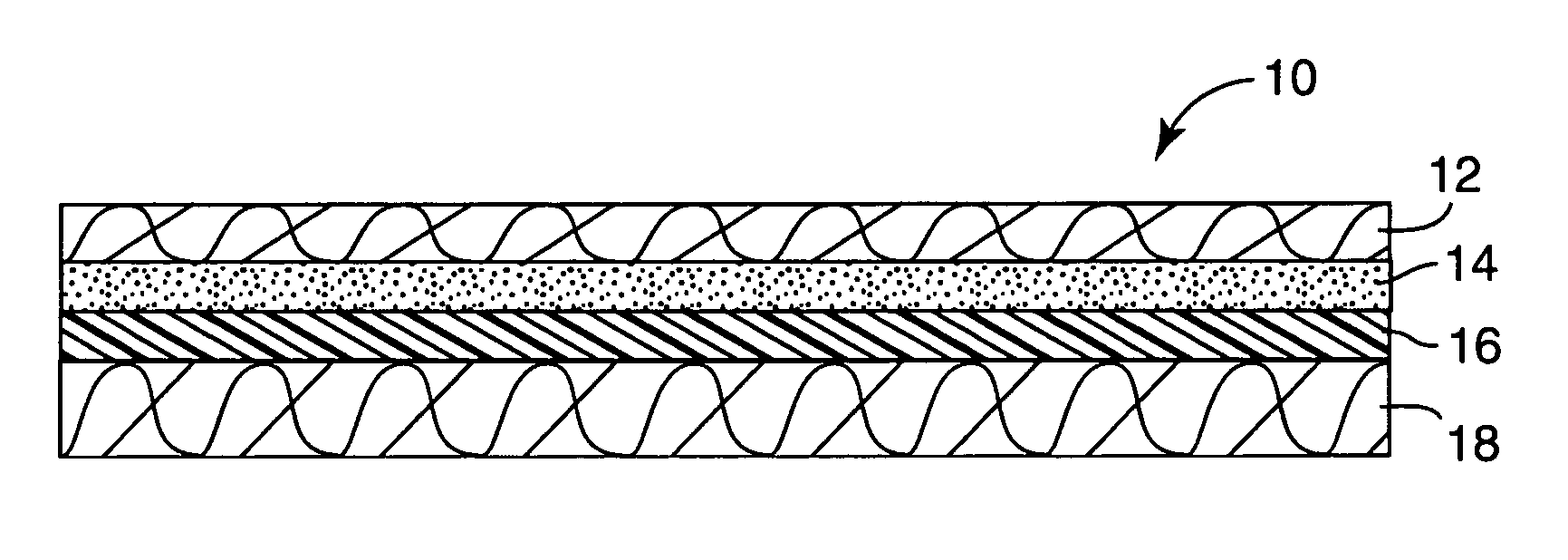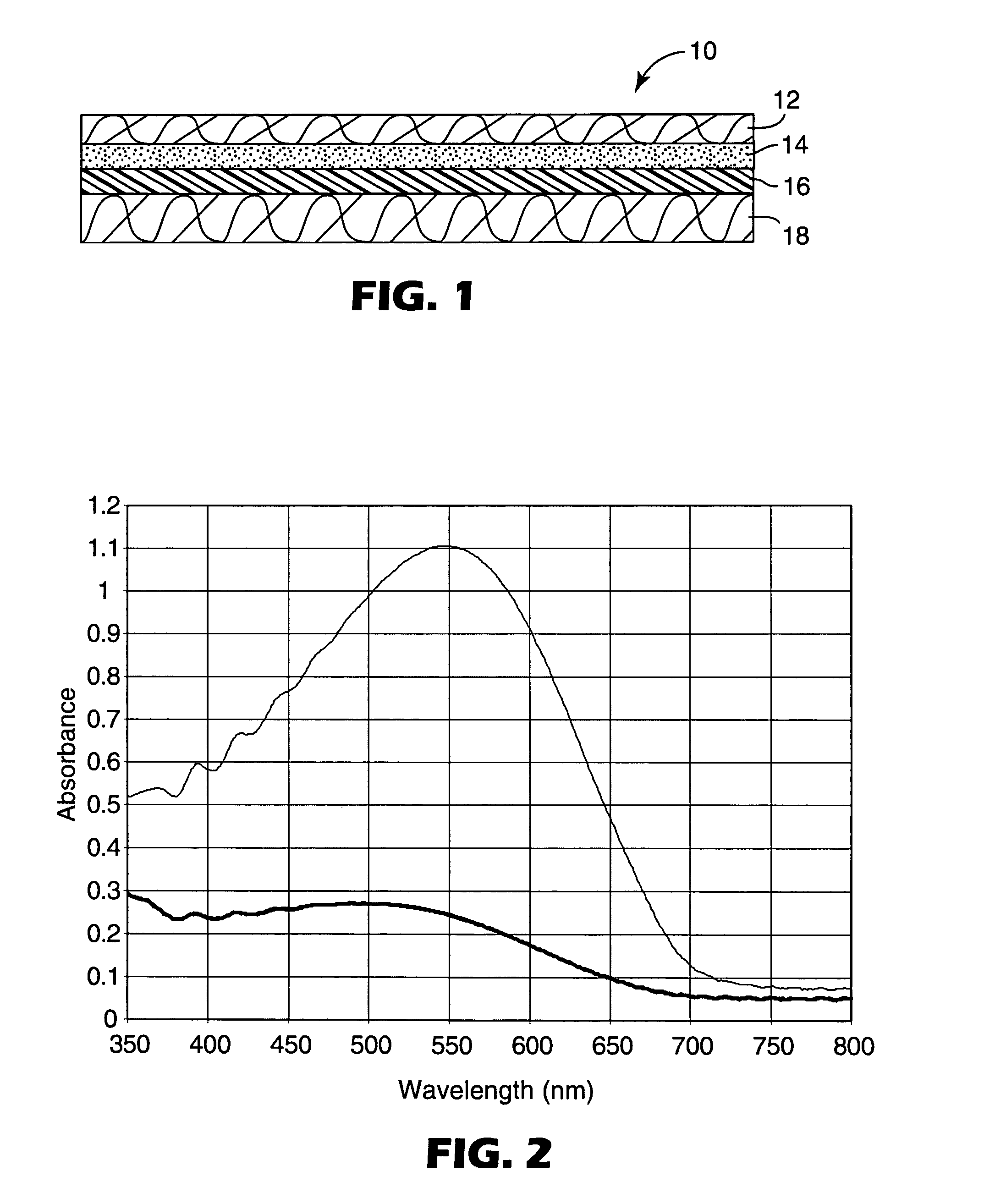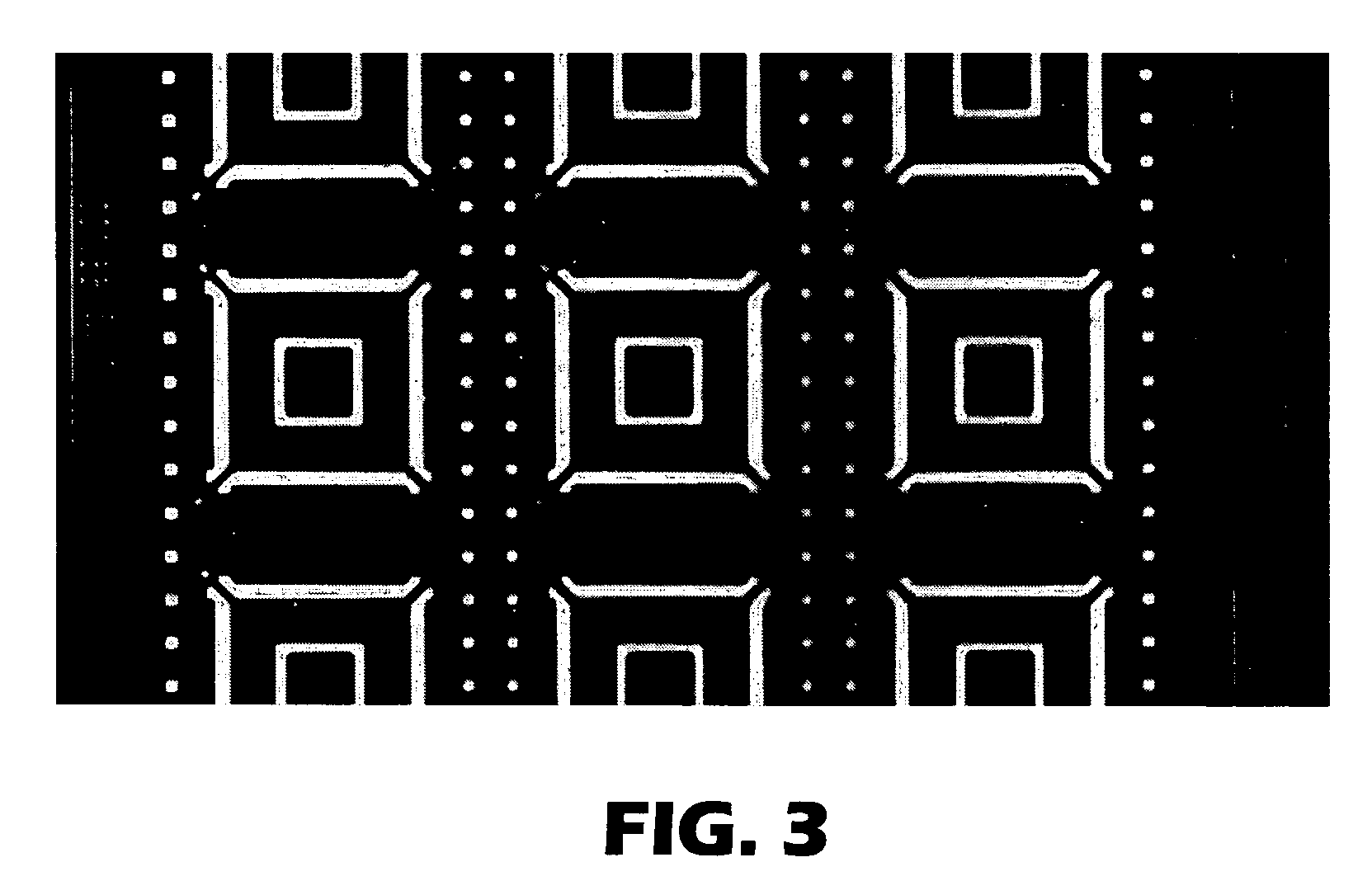Process for preparing a K-type polarizer
a polarizer and k-type technology, applied in the field of preparing k-type polarizers, can solve the problems of unsuitability for many precision optical applications, achieve the effects of reducing the loss of acid, improving moisture resistance, and reducing the risk of acid exposur
- Summary
- Abstract
- Description
- Claims
- Application Information
AI Technical Summary
Benefits of technology
Problems solved by technology
Method used
Image
Examples
examples 1 – 8
EXAMPLES 1–8
[0083]A series of poly(isooctyl acrylate-co-acrylic acid) polymers were prepared with varying ratios of isooctyl acrylate (IOA) to acrylic acid (AA). Mixtures containing 80–100 parts by weight of IOA (available from Aldrich, Milwaukee, Wis.), 0–20 parts by weight of AA (available from Aldrich, Milwaukee, Wis.), 0.4 parts by weight of 2,2′-azobis(2-methylbutyronitrile) (available as VAZO 67 from DuPont, Wilmington, Del.), and 150 parts by weight of ethyl acetate (available from EM Science, Gibbstown, N.J.) were prepared and heated at 65° C. for 24 hours. To each of the resulting solutions of polymer was added 0.2 parts by weight of 2,4-bis(trichloromethyl)-6-(3,4-dimethoxyphenyl)-s-triazine as the photoacid generator. The s-triazine may be prepared by the co-trimerization of an aryl nitrile with trichloroacetonitrile in the presence of HCl gas and a Lewis acid such as AlCl3, AlBr3, etc. as described by Wakabayashi et al., Bull. Chem. Soc. Japan, 42, 2924–2930(1969) and by...
example 9
[0086]Sandwich constructions with PET diffusion barrier layers were prepared as in Example 3, except that 96 parts by weight of IOA, 4 parts by weight of AA, and 0.5 parts by weight of 2,4-bis(trichloromethyl)-6-(3,4-dimethoxyphenyl)-s-triazine were used. The resulting constructions were exposed to UV light and heat as in Examples 1–8, except that exposure times were varied. The PET was removed from each exposed construction and the poly(isooctylacrylate-co-acrylic acid) was washed off of the partially dehydrated PVA film with ethyl acetate. The absorption spectra of the resulting exposed partially dehydrated PVA films were run and RD was determined as in Examples 1–8. The results are shown in Table 2. Representative spectra are shown in FIG. 2 using Sample 9L.
[0087]
TABLE 2Effect of UV and Thermal Exposure Times on OpticalProperties of Oriented PVA Film inSandwich ConstructionsUV105° C.λExposureExposureA(=)atmaxSampleTime (min)Time (min)RDλ maxA (⊥)(nm)9A30NANA2NA2NA9B31NANA2NA2NA9C...
example 10
[0088]A resin syrup was prepared by combining 80 parts by weight of IOA, 20 parts by weight of isobornyl acrylate (available from Aldrich, Milwaukee, Wis.), and 0.2 parts by weight of benzil dimethyl ketal (available as Esacure™ KB-1 from Sartomer Co., West Chester, Pa.), sparging the resulting solution with nitrogen for about 15 minutes, exposing the mixture to UV light (two F40 / 350 BL fluorescent tubes) until the viscosity reached 2000–3000 cps, and then quenching with oxygen. The resulting syrup (100 parts by weight) was mixed with 0.2 parts by weight of 2,4-bis(trichloromethyl)-6-(3,4-dimethoxyphenyl)-s-triazine. The resulting solution was coated at a nominal thickness of 0.127 mm onto a PVA film, formed into a sandwich construction, and exposed to UV light for 3 minutes followed by heat for 45 minutes essentially as in Example 9. A maroon color characteristic of the poly(acetylene) chromophores developed, indicating that a polarizer film was formed.
PUM
| Property | Measurement | Unit |
|---|---|---|
| glass transition temperature | aaaaa | aaaaa |
| wt. % | aaaaa | aaaaa |
| temperature | aaaaa | aaaaa |
Abstract
Description
Claims
Application Information
 Login to View More
Login to View More - R&D
- Intellectual Property
- Life Sciences
- Materials
- Tech Scout
- Unparalleled Data Quality
- Higher Quality Content
- 60% Fewer Hallucinations
Browse by: Latest US Patents, China's latest patents, Technical Efficacy Thesaurus, Application Domain, Technology Topic, Popular Technical Reports.
© 2025 PatSnap. All rights reserved.Legal|Privacy policy|Modern Slavery Act Transparency Statement|Sitemap|About US| Contact US: help@patsnap.com



